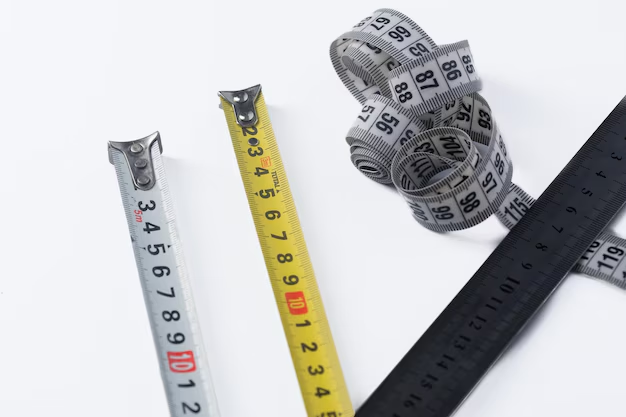Converting Feet to Meters: Master the Metric Conversion Dance 💃
Whether you're a student tackling a math problem, a traveler trying to understand road signs abroad, or a professional in a field that requires precise measurements, converting feet to meters is a skill that comes in handy more often than you might think. Here, we’ll explore the ins and outs of this conversion, delving into its importance and providing a step-by-step guide to make it second nature for you.
Why Convert Feet to Meters? 🌍
The Global Metric System
While feet and inches are commonly used in the United States, most of the world operates using the metric system, where measurements are in meters. This standardization is particularly useful in scientific, engineering, and international contexts. So, whether it's for work, travel, or general knowledge, understanding the conversion between feet and meters can bridge communication gaps.
Practical Applications
- Travel & Tourism: Navigating maps or understanding architectural dimensions.
- Engineering & Construction: International projects demand consistent measurements.
- Academics: Science and mathematics often rely on metric measurements.
The Simple Conversion Formula ✏️
Understanding the conversion between feet and meters doesn't require a degree in mathematics. In fact, the formula is straightforward:
1 foot = 0.3048meters
To convert feet to meters, multiply the number of feet by 0.3048.
Example Conversion
Suppose you're converting 10 feet to meters. The calculation would be:
[ 10 ext{ feet} imes 0.3048 = 3.048 ext{ meters} ]
With this, 10 feet is equivalent to 3.048 meters.
Tips for Quick Conversions 🕒
- Memorize the Multiplier: Remember the conversion factor, 0.3048. Familiarity aids speed.
- Use a Calculator or App: Smartphones have built-in calculators and conversion apps.
- Round for Estimates: When precision isn't critical, approximate 1 foot as 0.3 meters.
Tools and Techniques for Accurate Conversion 🔧
Digital Aids
- Online Converters: Numerous free tools are available online for quick conversion.
- Apps: Apps dedicated to unit conversion can be downloaded and provide instant answers.
Manual Calculation Techniques
- Pencil and Paper: Traditional, yet effective, for practicing the multiplication.
- Approximation: Useful in situations where quick mental math is needed. For a rough estimate, use 0.3 instead of 0.3048.
Summary Table of Common Conversions 📏
| Feet | Meters |
|---|---|
| 1 | 0.3048 |
| 5 | 1.524 |
| 10 | 3.048 |
| 20 | 6.096 |
| 50 | 15.24 |
| 100 | 30.48 |
Overcoming Common Conversion Challenges ⚠️
Forgetting the Conversion Factor
Remember, practice makes perfect. Regularly using the multiplication factor of 0.3048 helps cement it in memory.
Rounding Errors
For precision-critical tasks, avoid rounding the conversion factor significantly. Always use 0.3048 where precision is necessary.
Unit Confusion
Make sure to clearly label your units throughout problematic examples. This prevents mix-ups, ensuring clarity, especially in technical or academic settings.
Beyond Basics: Delve Deeper into Conversion 🔍
Understanding Metric Units
- Centimeters and Millimeters: Recognize that 1 meter equals 100 centimeters or 1,000 millimeters. This can help refine your sense of scale.
- Kilometers for Longer Distances: When converting larger measurements, relate 1,000 meters to 1 kilometer.
The Arithmetic of Scale
An understanding of larger systems leads to smarter navigation through all units. Realize that conversions are part of a broader ecosystem of number interplay.
Transitioning Measurement Systems with Confidence 🔄
Adapting to New Standards
If you're transitioning from customary to metric measurements, embrace the simplicity and logic of the metric system. It's broadly adopted, making global collaboration seamless.
Practice and Familiarity
Regular practice ensures comfort with conversions. Engage with metric measurements in everyday life, such as reading labels and using foreign recipes, to build familiarity.
Visualizing Measurements 🚶♂️
Activities That Foster Understanding
- Sports: Participate in sports that track distances in meters.
- Mapping: Use mapping tools that switch between units easily.
Empower Your Growth
Seeing the world in meters broadens one's perspective and equips you with an essential skill for global interaction.
Embrace the Metric Melody 🎵
Translating feet to meters is a vital tool in today’s global landscape. Whether using this conversion for your career, education, or personal growth, proficiency in this area enhances precision and understanding. Through practice and application, this once daunting task becomes a manageable and intuitive process. Enjoy the journey of mastering this vital skill, and let it broaden your horizons both near and far! 🌟

Related Topics
- How Can I Transfer Data From One Laptop To Another
- How Can I Transfer Domain To Godaddy
- How Can I Transfer My Calls To Another Phone
- How Can I Transfer Pdf To Word
- How Can We Transfer Data From One Laptop To Another
- How Can You Transfer Data From One Phone To Another
- How Can You Transfer Emails From One Account To Another
- How Can You Transfer Vhs Tapes To Dvd
- How Do I Transfer a Prescription From Walgreens To Cvs
- How Do I Transfer Data From Ipad To Ipad